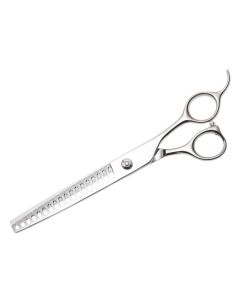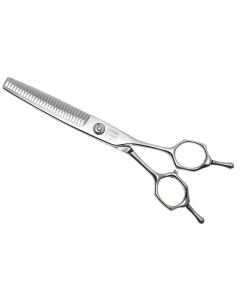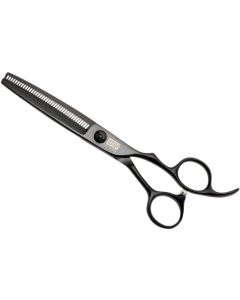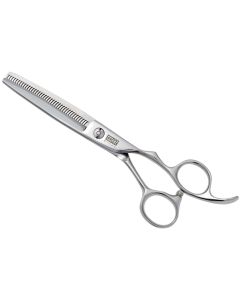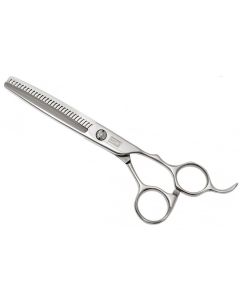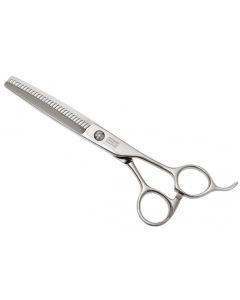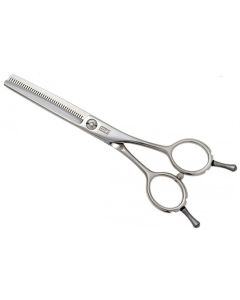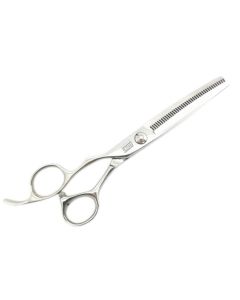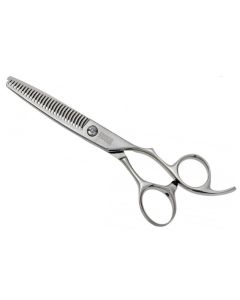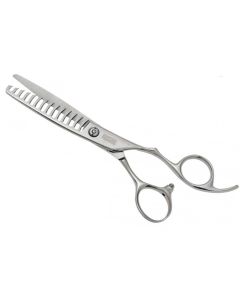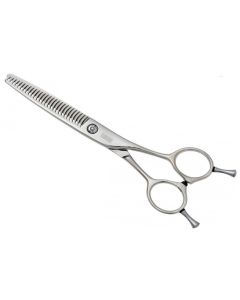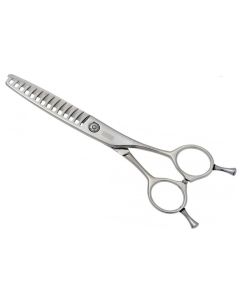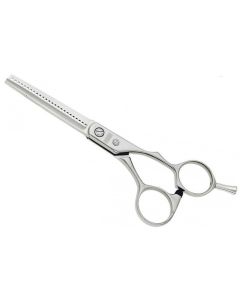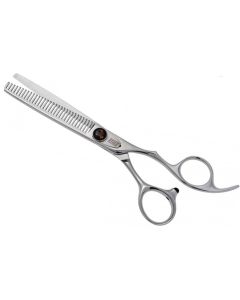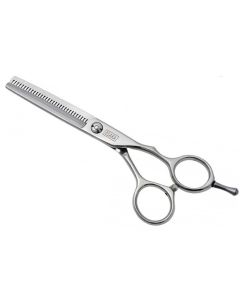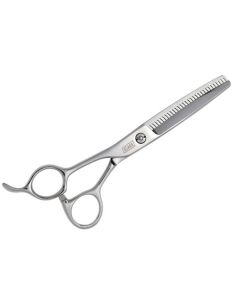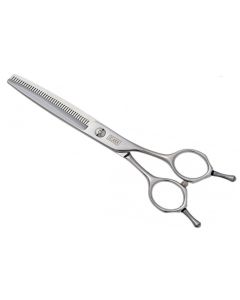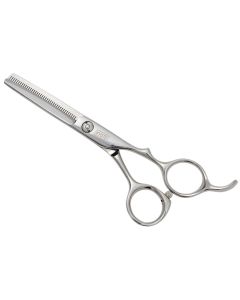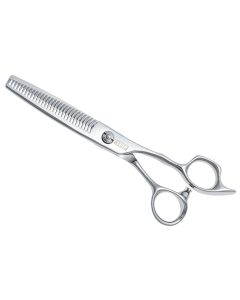Thinning Scissors
Hairdressing Scissors

Thinning scissors for hairdressing:
Thinning scissors are special scissors used by hairstylists to make hair lighter. One blade has tiny grooves, like little teeth, that help cut the hair into even sections. This helps reduce extra weight in the hair and makes it look smoother. These scissors also help blend different parts of the hair together for a nice, flowing style.
Types of thinning scissors for hairdressing:
Hair thinning scissors come in different types, each made for different things in hairstyling. Here are some common ones:
Straight-blade scissors: One side is straight, and the other has teeth. They're good for basic thinning and blending hair.
Chunking scissors: They have wider teeth and remove bigger sections of hair to make it look textured and full.
Double-sided scissors: Both blades have teeth, so they're perfect for precise thinning and blending.
Thinning scissors with removable blades: The blades can be taken off and changed easily, so they're good for different thinning styles.
Each type of thinning scissors helps hairstylists make different hairstyles easily.
Uses of Thinning scissors for hairdressing:
When you use thinning shears, remember where you're cutting and which way your shears are facing. "These shears can make holes in your hair, especially the ones with wider teeth," says Jones.
Thinning scissor cut parts of your hair shorter, so don't cut too close to your scalp or hairline. "The short hair might stick up, like when you cut a cowlick too short," Small explains. And if your shears are facing the wrong way when you cut, it'll make a big, misplaced snip.

